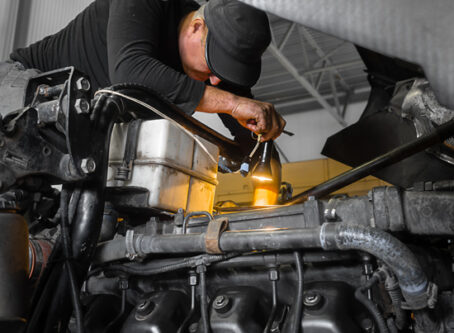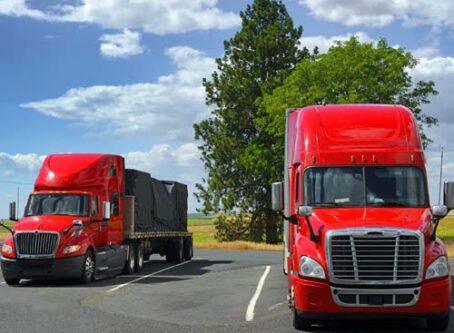Oregon study suggests parking shortage may cause crashes, worsened by lower speeds
The number of studies highlighting the consequences of the truck parking shortage keeps piling up. The latest comes from Oregon State University, which points out that a parking shortage may cause crashes and reducing speeds can exacerbate the problem.
The study focused on Biggs Junction at I-84 and the entire U.S. Highway 97 in Oregon. Research was conducted by the OSU College of Engineering for the Oregon Department of Transportation.
Slower speeds = more problems
As the average truck speed decreases, parking demand worsens.
Data suggests that reducing average truck speed exacerbates the problem. Reducing average truck speed to 50 mph can lead to an 11 percent increase in the shortage at rest areas and a 14 percent increase at truck stops. Further reducing the average speed to 45 mph results in a 21 percent increase in parking shortages at rest areas and a 28 percent increase at truck stops.
Hot spots
Researchers identified large truck crash “hot spots” in Oregon at Biggs Junction, just south of Peter Skene Ogden Wayside, just south of Bend; Gordy’s Truck Stop, near Chiloquin rest area; and Klamath Falls.
Hot spot analysis results show that large truck crash hot spots are immediately near an existing truck parking location or along a segment between parking locations. This suggests a correlation between large truck parking facilities and the locations that experience a large number of large truck crashes.
“Although unable to state for certain if these crash hot spots are related to truck parking, the statistical and geospatial crash hot spot analysis provides evidence that there is an association,” researchers concluded.
Crash harm
Collecting data covering a seven-year span on Highway 97 in Oregon, the OSU College of Engineering found that at-fault truck crashes resulted in approximately $75 million of “crash harm,” according to a news release. The study was conducted for the Oregon Department of Transportation.
The values “are based on at-fault truck crashes where truck parking deficiency could have been a contributing factor,” researchers noted.
Crash harm increases closer to the California border, possibly the result of parking shortages, pavement condition and change in the speed limits.
Parking is only getting worse
According to the study, there are approximately 500 truck parking spaces on U.S. Highway 97, including 400 parking spaces at truck stops and just over 100 parking spaces at rest areas. Gordy’s Truck Stop holds nearly 200 of those spots.
Currently, there is a surplus of truck stop parking spaces on Highway 97 from the Washington-Oregon border to Grass Valley (Segment I). However, there is a shortage when it comes to rest area parking. The truck stop surplus is expected to decrease to zero by 2035 while the shortage continues to increase.
Segment II from Grass Valley to the Oregon-California border reveals a shortage at both truck stops and rest areas. By 2035, shortages in this area is expected to be approximately 50 spots short at truck stops and about 225 short at rest areas.
So what can be done about parking shortages? The answer is not so simple.
“This is a major shortcoming, as there is no efficient method to estimate the cost of truck parking related crashes without crash records that indicate if a crash occurred as a result of truck parking,” the study says. “To address this, the primary solution would be to update crash data collection forms, both for police reporting and self-reporting, to include information regarding if the crash was related to truck parking (i.e., driver that has exceeded hours of service regulations because of inadequate parking and a crash occurred due to fatigue). Unless addressed, this will remain an obstacle in determining the link between crashes and deficient truck parking.”
Researchers could not implement enhancements to the parking problem. However, they looked at what other states have accomplished and recommended real-time parking information through radio broadcasting, smartphone apps and electronic road signs.
“In Oregon, if we do nothing to address the problem and freight-related traffic continues to grow, we’ll face greater truck parking shortages,” said the study’s lead author, Salvador Hernandez, a transportation safety and logistics researcher at Oregon State. “A possible solution is finding ways to promote public-private partnerships, the state working together with industry.”









